
The quantity of calories vary according to the type of food, and there are light/diet products
The content of a food determines the quantity of calories per gram. Therefore, the quantity of calories in the food doesn’t depend on the fact it is industrialized or not. Sales statistics demonstrate that most food marketed by the industry is designed to Brazilians basic nutrition, containing a natural quantity of calories from its raw materials. Determined products, whether industrialized or not, such as sweet cookies, cakes, and ice creams, can be more caloric due to the use of flours, sugar and fats.
Check the data about calories content in industrialized food:
- The studies conducted by Ital, about calories content (energy value) stated on the label of many industrialized food, demonstrate that generally, the quantities of calories vary significantly, there are products with reduced content and there are also diet products
- Corporate initiatives to reduce the products energy content
Bread
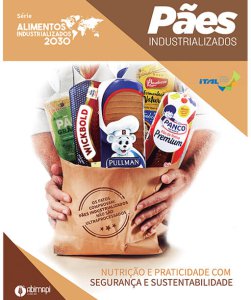 In 2019, Ital and ABIMAPI conducted a study about nutrients and ingredients of 70 products marketed in Brazil, obtaining the following results. ALL the industrialized white loaves of bread have a LOWER quantities of CALORIES than the average quantity of French bread. Most whole loaves of bread is MORE CALORIC that the whole homemade bread; however, there are MANY PRODUCTS with LOWER quantities.
In 2019, Ital and ABIMAPI conducted a study about nutrients and ingredients of 70 products marketed in Brazil, obtaining the following results. ALL the industrialized white loaves of bread have a LOWER quantities of CALORIES than the average quantity of French bread. Most whole loaves of bread is MORE CALORIC that the whole homemade bread; however, there are MANY PRODUCTS with LOWER quantities.
Cookies
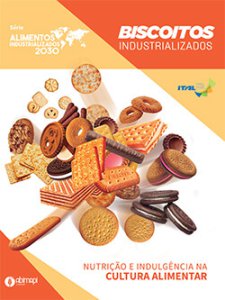 In 2020, Ital and ABIMAPI conducted a study about nutrients and ingredients of 243 products marketed in Brazil, obtained the following results. Generally, cookies, mainly sweet, can not be considered as products of low calories content, considering the average of 212 kcal of portions of 50 g. However the quantities of calories vary among the many different types of cookies available in the market.
In 2020, Ital and ABIMAPI conducted a study about nutrients and ingredients of 243 products marketed in Brazil, obtained the following results. Generally, cookies, mainly sweet, can not be considered as products of low calories content, considering the average of 212 kcal of portions of 50 g. However the quantities of calories vary among the many different types of cookies available in the market.
Cakes
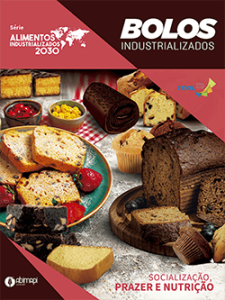 In 2021, Ital and ABIMAPI conducted a study about nutrients and ingredients of 210 products marketed in Brazil, obtained the following results. Generally, cakes are not products with low ENERGY VALUE as they are compound of wheat, sugar, oils and fat. However, the quantities of calories vary significantly among the analyzed products.
In 2021, Ital and ABIMAPI conducted a study about nutrients and ingredients of 210 products marketed in Brazil, obtained the following results. Generally, cakes are not products with low ENERGY VALUE as they are compound of wheat, sugar, oils and fat. However, the quantities of calories vary significantly among the analyzed products.
Doughs
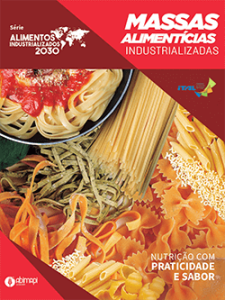 In 2021, Ital and ABIMAPI conducted a study about nutrients and ingredients of 269 products marketed in Brazil, obtaining the following results. Generally, doughs are not products with low ENERGY VALUE as they are compound of wheat, sugar, oils and fat. However, the quantities of calories vary significantly among the analyzed products. As observed in the chapter on market trends, products have been developed with reduced energy value, with ingredients reformulation and fats reduction. Among the alternatives to reduce calories, there are thinner doughs, plant-based dough, less caloric fillings, smaller portions.
In 2021, Ital and ABIMAPI conducted a study about nutrients and ingredients of 269 products marketed in Brazil, obtaining the following results. Generally, doughs are not products with low ENERGY VALUE as they are compound of wheat, sugar, oils and fat. However, the quantities of calories vary significantly among the analyzed products. As observed in the chapter on market trends, products have been developed with reduced energy value, with ingredients reformulation and fats reduction. Among the alternatives to reduce calories, there are thinner doughs, plant-based dough, less caloric fillings, smaller portions.
Pizzas
 In 2020, Ital and ABIA conducted a study about nutrients and ingredients of 56 products marketed in Brazil, obtained the following results. Generally, pizzas are not products with low ENERGY VALUE due to the nature of its ingredients. For example, doughs represent about 50% of the average frozen pizza composition, and its main ingredient, wheat flour, contains approximately 80% of carbohydrates. Even though, the quantities of calories vary significantly among the analyzed products and, following the market trends, products have been developed with reduced energy value, with ingredients reformulation and fats reduction.
In 2020, Ital and ABIA conducted a study about nutrients and ingredients of 56 products marketed in Brazil, obtained the following results. Generally, pizzas are not products with low ENERGY VALUE due to the nature of its ingredients. For example, doughs represent about 50% of the average frozen pizza composition, and its main ingredient, wheat flour, contains approximately 80% of carbohydrates. Even though, the quantities of calories vary significantly among the analyzed products and, following the market trends, products have been developed with reduced energy value, with ingredients reformulation and fats reduction.
Yogurt
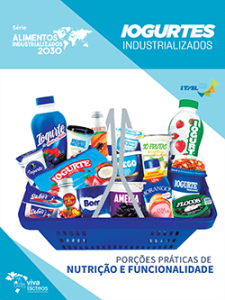 In 2020, o Ital and Viva Lácteos conducted a study about nutrients and ingredients of 150 products marketed in Brazil, obtained the following results. Generally, yogurts are not considered as products of low caloric content, considering the average caloric value (116 Kcal) of individual portions. The portions size vary significantly among the analyzed products: 42 items in the range of 90 g to 100 g; 23 within 120 g to 140 g; 71 within 150 g to 170 g; 8 within 180 g to 200 g; and 6 within 250 g to 300 g. On the other hand, following the market trend, the offer for less caloric products has been reducing, by using skimmed milk, sugar reduction, use of sweeteners and reduction of the portions size.
In 2020, o Ital and Viva Lácteos conducted a study about nutrients and ingredients of 150 products marketed in Brazil, obtained the following results. Generally, yogurts are not considered as products of low caloric content, considering the average caloric value (116 Kcal) of individual portions. The portions size vary significantly among the analyzed products: 42 items in the range of 90 g to 100 g; 23 within 120 g to 140 g; 71 within 150 g to 170 g; 8 within 180 g to 200 g; and 6 within 250 g to 300 g. On the other hand, following the market trend, the offer for less caloric products has been reducing, by using skimmed milk, sugar reduction, use of sweeteners and reduction of the portions size.
Plant-based beverages
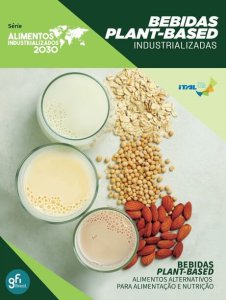 In 2022, Ital and Good Food Institute conducted a study about nutrients and ingredients of 178 products marketed in Brazil, obtaining the following results. Generally, there are few (8.4% of the total sample) plant-based beverages with low ENERGY VALUE (up to 40 kcal/200 ml). However, 64% of the products have, at most, 100 kcal/200 ml, and most of them don’t exceed 150 kcal/200 ml: TOTAL (97.2%), CEREALS (97.1%), LEGUMES (96.0%), OILSEEDS (100.0%), FRUIT (92.9%) and MIXED (97.0%). The quantities of calories vary significantly among the analyzed products, depending on the vegetable bases used and the addition of sugar and other ingredients, such as, cocoa, coconut, etc. As observed in the chapter on market trends, products have been developed with reduced energy value, in order to meet the consumers demands.
In 2022, Ital and Good Food Institute conducted a study about nutrients and ingredients of 178 products marketed in Brazil, obtaining the following results. Generally, there are few (8.4% of the total sample) plant-based beverages with low ENERGY VALUE (up to 40 kcal/200 ml). However, 64% of the products have, at most, 100 kcal/200 ml, and most of them don’t exceed 150 kcal/200 ml: TOTAL (97.2%), CEREALS (97.1%), LEGUMES (96.0%), OILSEEDS (100.0%), FRUIT (92.9%) and MIXED (97.0%). The quantities of calories vary significantly among the analyzed products, depending on the vegetable bases used and the addition of sugar and other ingredients, such as, cocoa, coconut, etc. As observed in the chapter on market trends, products have been developed with reduced energy value, in order to meet the consumers demands.
Juices and other non-carbonated beverages
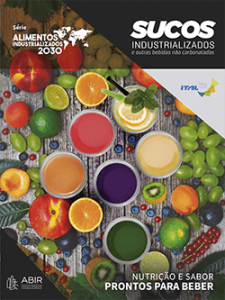 In 2020, Ital and ABIR conducted a study about nutrients and ingredients of 217 products marketed in Brazil, obtaining the following results. Generally, the ENERGY VALUE of juices, nectars and refreshments vary a lot according to their formulation. There are products with higher caloric value because they are made with fruit with higher sugar content naturally present in their composition, such as, for example, grape and açaí. On the other hand, following the market trend, there are several products that have reduce energetic values, with reduction of sugar added, use of sweeteners, mix of apple juice, incorporation of vegetables and even the reduction in the portions size. In the sample of 217 beverages analyzed, there are products considered as LOW in calories.
In 2020, Ital and ABIR conducted a study about nutrients and ingredients of 217 products marketed in Brazil, obtaining the following results. Generally, the ENERGY VALUE of juices, nectars and refreshments vary a lot according to their formulation. There are products with higher caloric value because they are made with fruit with higher sugar content naturally present in their composition, such as, for example, grape and açaí. On the other hand, following the market trend, there are several products that have reduce energetic values, with reduction of sugar added, use of sweeteners, mix of apple juice, incorporation of vegetables and even the reduction in the portions size. In the sample of 217 beverages analyzed, there are products considered as LOW in calories.
Ice creams
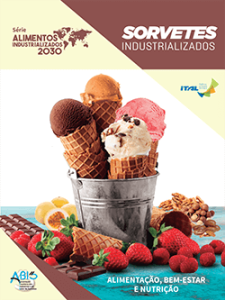 In 2021, Ital and ABIS conducted a study about nutrients and ingredients of 180 products marketed in Brazil, obtained the following results. Generally, the ice creams ENERGY VALUE vary a lot according to their formulation. There are products with a higher caloric content as they are made from more caloric ingredients, such as açaí pulp with 382 Kcal per ball of 60 g. However, as observed in the chapter on market trends, there are many products with reduced energy value, with reduction of sugar, and fats, and the use of sweeteners. In the sample of 180 ice creams, there are 21 products (11.7% of the sample) with a maximum of 100 Kcal per portion of 60 g (equivalent to a ice-cream ball).
In 2021, Ital and ABIS conducted a study about nutrients and ingredients of 180 products marketed in Brazil, obtained the following results. Generally, the ice creams ENERGY VALUE vary a lot according to their formulation. There are products with a higher caloric content as they are made from more caloric ingredients, such as açaí pulp with 382 Kcal per ball of 60 g. However, as observed in the chapter on market trends, there are many products with reduced energy value, with reduction of sugar, and fats, and the use of sweeteners. In the sample of 180 ice creams, there are 21 products (11.7% of the sample) with a maximum of 100 Kcal per portion of 60 g (equivalent to a ice-cream ball).
Hamburgers
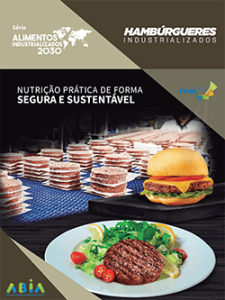 In 2021, Ital and ABIA conducted a study about nutrients and ingredients of 90 products marketed in Brazil, obtaining the following results. Generally, hamburgers are not products with low ENERGY VALUE due to the nature of its ingredients. However, the quantities of calories vary significantly among the analyzed products. As observed in the chapter about trends, products have been developed with reduced energy value, with ingredients reformulation and fats reduction. Meat and vegetables products present similar content of calories.
In 2021, Ital and ABIA conducted a study about nutrients and ingredients of 90 products marketed in Brazil, obtaining the following results. Generally, hamburgers are not products with low ENERGY VALUE due to the nature of its ingredients. However, the quantities of calories vary significantly among the analyzed products. As observed in the chapter about trends, products have been developed with reduced energy value, with ingredients reformulation and fats reduction. Meat and vegetables products present similar content of calories.
Chocolates
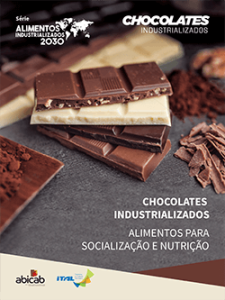 In 2022, Ital and ABICAB conducted a study about nutrients and ingredients of 483 products marketed in Brazil, obtaining the following results. Generally, chocolates ate not products of low caloric content, as they are compound by cocoa butter, milk, sugar, among other ingredients characteristics for this product, such as peanut, almonds, nuts, chestnuts. However, the quantities of calories vary significantly among the analyzed products. As observed in the chapter on market trends, products have been developed with reduced energy value, with ingredients reformulation and fats reduction, many times by substituted fibers and proteins.
In 2022, Ital and ABICAB conducted a study about nutrients and ingredients of 483 products marketed in Brazil, obtaining the following results. Generally, chocolates ate not products of low caloric content, as they are compound by cocoa butter, milk, sugar, among other ingredients characteristics for this product, such as peanut, almonds, nuts, chestnuts. However, the quantities of calories vary significantly among the analyzed products. As observed in the chapter on market trends, products have been developed with reduced energy value, with ingredients reformulation and fats reduction, many times by substituted fibers and proteins.
Peanut
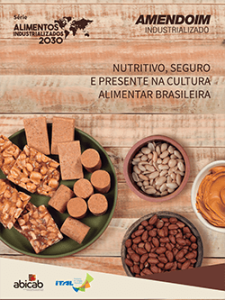 In 2022, Ital and ABICAB conducted a study about nutrients and ingredients of 416 products marketed in Brazil, obtaining the following results. Generally, peanut, even in its natural state, is not a low ENERGY VALUE food, which can be observed in the GRAINS category, which range within 194 Kcal to 397 Kcal, in portions of 50 g, with or without addition of sugar and other ingredients in addition to peanut. The quantities of calories vary significantly among the analyzed products, which can be salty or sweet, with a wide variety of raw materials used in toppings and other preparations. Even though, except for oils, there are many products with ENERGY VALUE below 100 Kcal (portions of 15 g to 20 g).
In 2022, Ital and ABICAB conducted a study about nutrients and ingredients of 416 products marketed in Brazil, obtaining the following results. Generally, peanut, even in its natural state, is not a low ENERGY VALUE food, which can be observed in the GRAINS category, which range within 194 Kcal to 397 Kcal, in portions of 50 g, with or without addition of sugar and other ingredients in addition to peanut. The quantities of calories vary significantly among the analyzed products, which can be salty or sweet, with a wide variety of raw materials used in toppings and other preparations. Even though, except for oils, there are many products with ENERGY VALUE below 100 Kcal (portions of 15 g to 20 g).



